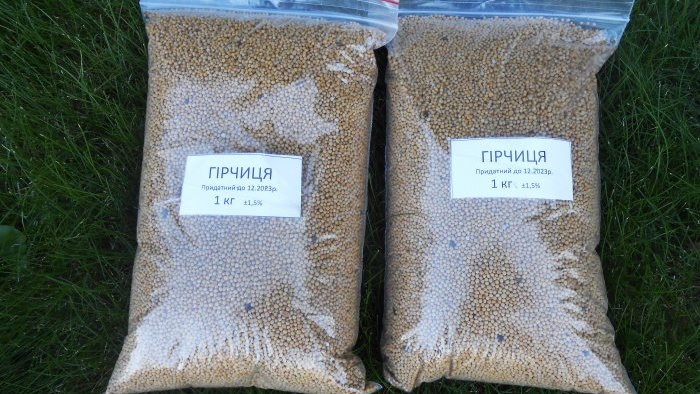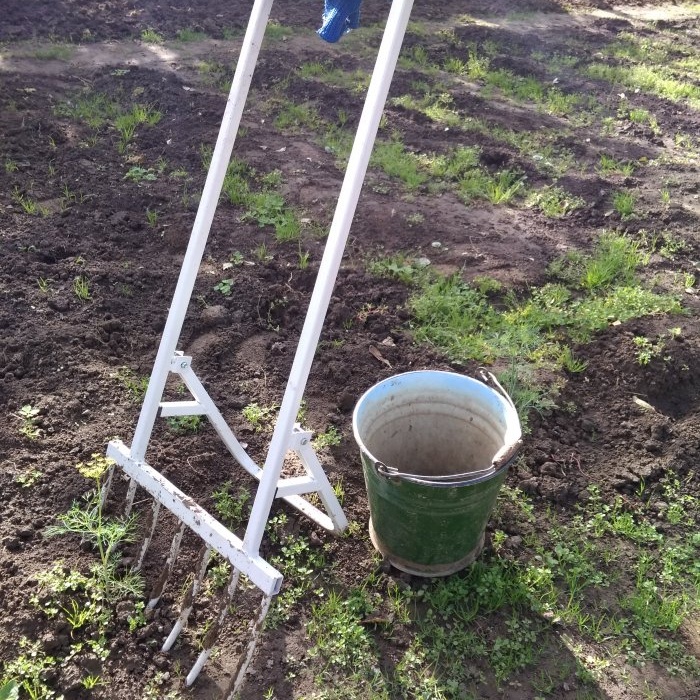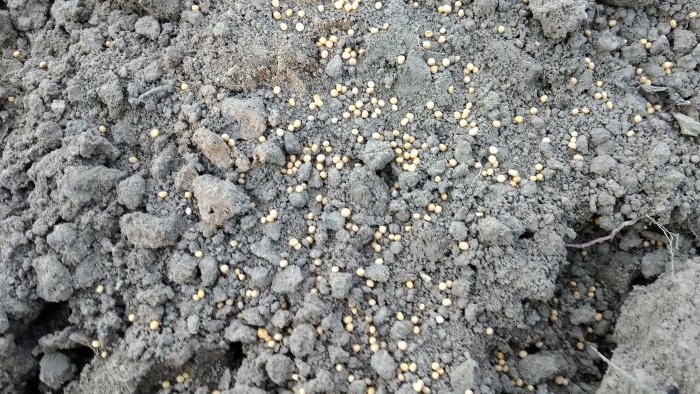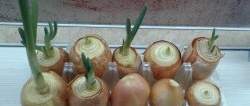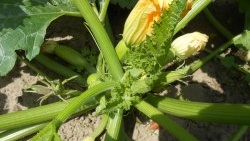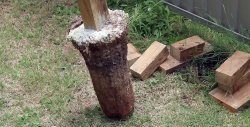A decrease in soil fertility negatively affects the yield of all vegetable and fruit crops. And ornamental plants, both annual and perennial, growing on depleted soil develop weak and unattractive. According to experts, in this situation it is impossible to do without the systematic use of organic and organomineral fertilizers on a personal plot.
Green fertilizer for fans of organic farming
One of the most inexpensive and at the same time effective ways to enrich the soil with humus, minerals, microelements and other substances useful for plantings is green manure. Sowing green manure in areas free from main crops or left fallow completely stops the processes of land destruction and restores fertility in a short time.
Mustard belongs to the early ripening green manure crops. In just 50-60 days, the vegetative mass gains the required volume. Mustard mowing is carried out either before flowering begins, or after the first blooming flowers appear in the plantings.In any case, mustard mustard, like other green manures, must be harvested before sowing the seedlings.
After the seeds are scattered, they are embedded in the top layer using a rake. As a result, mustard seeds are located at a depth of 1 to 2 cm, germinating quickly. In moist soil and at soil temperatures above +14°C, seedlings appear within 3-6 days. In cold weather and drought conditions, when it is not possible to organize watering of the plantation, for example, in dry autumn weather, seedlings appear on the 10-12th day.
The benefits of mustard in the garden
As a predecessor, white mustard, black mustard (French), yellow mustard is used for planting all plants, except those belonging to the cruciferous family (all types of cabbage, turnips, radishes, etc.). Before cabbage vegetables, you can sow cereals or legumes, green manure crops, as well as buckwheat or phacelia.
After plowing mustard greens, even if they are in a semi-decomposed state over the winter, the soil is enriched with vermicompost, a complete NPK complex, and microelements. One-time use of green fertilizer partially replaces the application of manure and humus.
And if you carry out green manure several times a season, sequentially sowing a new batch of seeds after mowing and planting the previous green manure (every 60 days), then you can do without the use of manure, peat or compost. In this case, the greatest effect is achieved by gardeners who plant crops belonging to different families, for example, white mustard, lentils and phacelia or French mustard, lupine and buckwheat.
Densely growing mustard with a rapidly developing root system does not give a chance for the development of all types of weeds, be it purslane, stinging nettle, sow thistle, bindweed, cow parsnip or hogweed.
Plants also contain powerful volatile compounds, including mustard oil and phytoncides, which cleanse the soil in garden beds from phytopathogens and create unfavorable conditions for the activity of soil pests (nematodes, click beetles, wireworms, etc.).
A thick ground cover layer of greenery prevents the leaching of nutrients into the deeper layers and protects the top layer of soil from destruction due to weathering. In winters with little snow, it is especially important to have a mulch layer on the site, which prevents the soil from freezing to a great depth and moisture evaporation.
The long root shoots of mustard easily penetrate deep into the ground, bringing hard-to-reach compounds of phosphorus and other minerals to the surface in search of nutrition. After mowing, the remaining roots and embedded greenery decompose in 3 weeks, enriching the beds with bioavailable forms of phosphates, and the soil penetrated by the roots becomes structured (loose, moisture- and breathable).
Planting mustard in autumn
After harvesting and removing tops and plant residues, the soil in the beds is dug up and leveled with a rake. Plowing can be avoided on cultivated and structured soils, which can only be loosened with a rake.
Mustard seeds or any other selected green manure are evenly scattered over the leveled surface of the area, manually or using a seeder. The consumption rate of planting material is 0.2 - 0.3 kg per hundred square meters.
If malicious weeds, for example, chickweed (chickweed), purslane, wheatgrass, celandine, dandelion, etc., have spread excessively on your site, then the seed consumption rate is doubled. A thick carpet of green manure does not allow even the strongest weeds to break through, since the root system of mustard, which easily penetrates into the lower horizons of the soil, suppresses the roots of unwanted plants.
It is also necessary to increase the consumption of mustard seeds in cases where crop plants have been severely damaged by diseases and pests in the current season. The phytoncides and essential oils secreted by mustard roots inhibit the vital activity of pathogenic microflora and soil pests, significantly reducing the number of dangerous microbes, fungi and bacteria, as well as insect larvae.
No care for mustard is required from the gardener, except for watering the plants in dry times - once every 5-6 days. The vegetative mass, grown until stable frosts, will remain on the soil surface, retaining the snow cover and protecting the soil from erosion.
You will need to dig up beds with heavy soil in the spring, after the snow melts. Light soils will need to be thoroughly loosened in the spring.
Try planting mustard on the vacant beds, and you will appreciate the effect of green manure in the next season!
